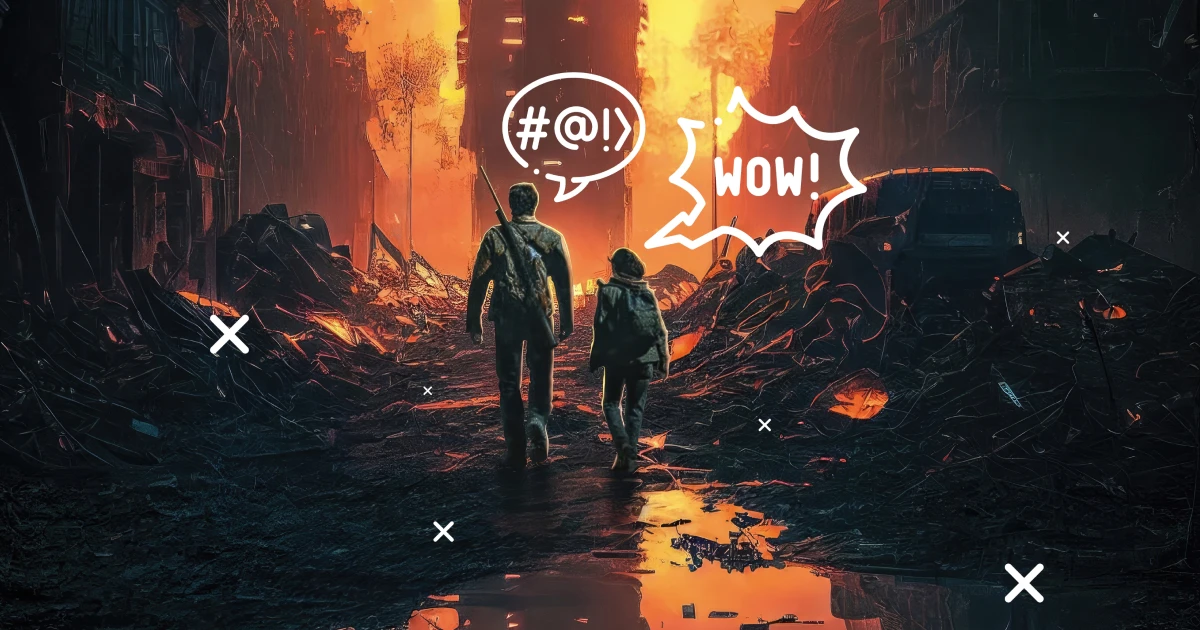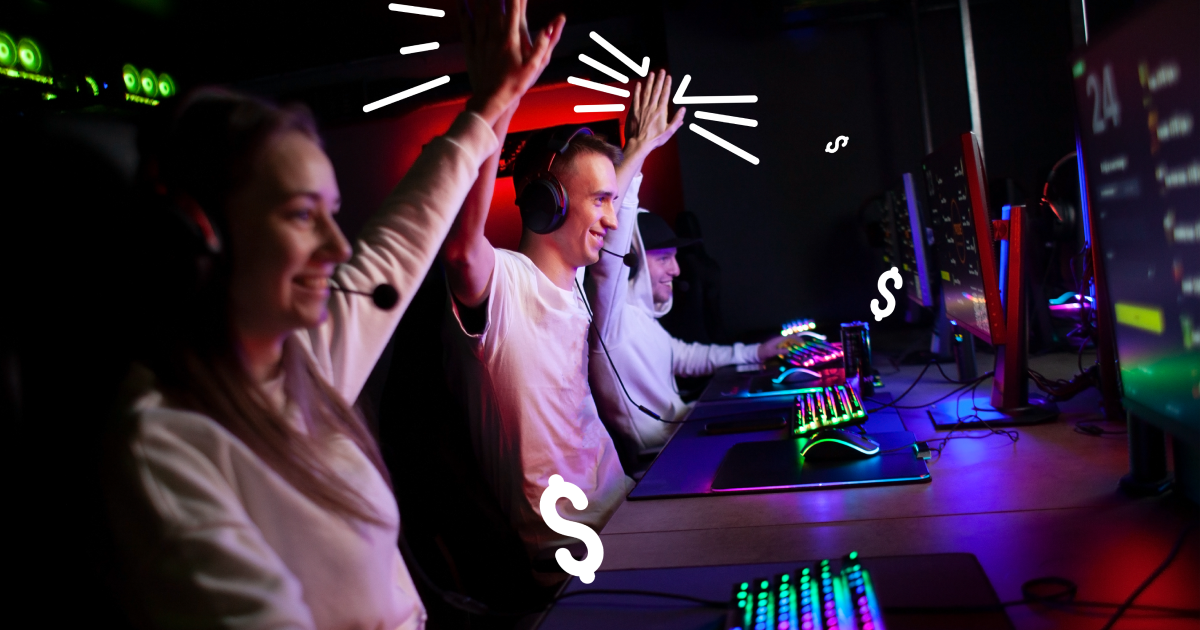Brief Introduction to Dialogues and Conversations in Video Games
Dialogues and conversations in video games refer to the parts of the game where characters speak to each other. These dialogues can be presented in written text or voiced audio, playing a crucial role in storytelling and character development. In older games, dialogues were presented as simple, short texts, but with technological advancements, games have been able to feature more complex and natural dialogues with the help of professional voice actors and cinematic techniques. Today, dialogues have become one of the key elements in video game design, significantly impacting the players’ experience.
The Importance of Dialogues in the Gaming Experience
Dialogues play a vital role in the overall experience of video games. They enhance the gaming experience in several important ways:
Advancing the Story
Dialogues are the main tool for advancing the story in many games. Through conversations, players become familiar with the main plot and subplots, gaining essential information about the game world.
Character Development
Dialogues help in developing and adding depth to characters. Through conversations, characters can reveal their emotions, motivations, and backgrounds, allowing players to form emotional connections with them.
Creating Choices and Interactions
Many modern games allow players to participate in conversations and choose dialogues. These choices can significantly impact the story and game outcomes, giving players a greater sense of control and influence.
Social Interactions and Multiplayer
In multiplayer and online games, dialogues can help players communicate and collaborate with each other. These conversations can enhance the social experience of the game.
Enhancing Immersion
Well-written dialogues and professional voice acting can greatly enhance the game’s immersive experience. When dialogues feel natural and realistic, players feel more like they are truly part of the game world.
Overall, dialogues and conversations significantly enrich the experience of video games and can deeply affect how players interact with the game.

History of Dialogues in Video Games
Evolution of Dialogues from Early Games to Modern Games
Dialogues in video games have undergone a long and winding evolutionary path:
Early Games
Initially, video games were mostly devoid of dialogues or used very simple texts. Early games like “Pac-Man” and “Space Invaders” lacked any form of dialogue, focusing primarily on simple gameplay.
8-bit and 16-bit Era
With the advent of NES and SNES consoles, games started using simple texts to convey stories. Games like “The Legend of Zelda” and “Final Fantasy” used textual dialogues to advance their stories. These dialogues were very simple and short, mostly displayed as static text at the bottom of the screen.
32-bit and 64-bit Era
With advancements in graphics and storage capacity, games were able to incorporate more complex and longer dialogues. Games like “Final Fantasy VII” and “Metal Gear Solid” used longer dialogues and advanced cinematics to narrate their stories. This period saw the beginning of voice acting in some games.
Newer Generations
With the arrival of PlayStation 2, Xbox, and beyond, the use of voice dialogues became more widespread. Games like “Mass Effect” and “The Witcher” featured complex voice dialogues and conversational choices that affected the story. New technologies like motion capture and professional voice acting enhanced the realism of dialogues.
Modern Games
In today’s games, dialogues have reached a new level of realism and interaction. Games like “Red Dead Redemption 2” and “The Last of Us Part II” use complex dialogues, professional voice actors, and advanced technologies to create an unparalleled experience. Conversational choices and their impact on the story have also become more significant.
New Technologies and Their Impact on Dialogues
New technologies have significantly influenced the quality and complexity of dialogues in video games:
Professional Voice Acting
Using professional voice actors for recording dialogues has helped create more realistic characters and engaging stories. This technology allows for the expression of more complex emotions and reactions.
Motion Capture
Motion capture technology allows developers to accurately record the movements and facial expressions of actors and transfer them to game characters. This technology makes dialogues appear more natural and realistic.
Artificial Intelligence
AI has helped create dynamic and interactive dialogues. Games like “Red Dead Redemption 2” use AI to generate dynamic and unpredictable conversations, giving players the feeling of being in a living and dynamic world.
Virtual Reality (VR)
With the advancement of VR technology, video games can present dialogues in a more immersive way. In VR environments, players can interact directly with characters, experiencing a more comprehensive and engaging conversation.
These technologies have generally contributed to increasing the realism and depth of dialogues in video games, allowing players to have a richer and more interactive experience with stories and characters.

Building emotional connections with players
Connections Between Players and Game Characters
Dialogues play a crucial role in creating emotional connections between players and game characters. Through dialogues, characters come to life, and players can connect with their emotions, motivations, and stories. Well-written dialogues, performed by professional voice actors, can profoundly impact the player’s experience, conveying complex emotions such as love, hate, fear, and empathy. This involvement makes players engage with the story and empathize with the characters.
Examples of Famous Games Using Dialogues to Create Emotional Connections
The Last of Us
In this game, the relationship between Joel and Ellie is portrayed through deep and impactful dialogues. Their conversations gradually reveal the complex emotions and deep emotional bond between these two characters.
Mass Effect
The Mass Effect series by BioWare allows players to shape their relationships with various characters through different dialogue choices. These choices not only affect the story but also create strong emotional connections with the game’s characters.
Red Dead Redemption 2
This game uses natural and realistic dialogues to bring its characters to life. The dialogues between Arthur Morgan and other gang members help players form deep emotional connections with the story and characters.
Life is Strange
Life is Strange focuses on dialogues and player choices to create an emotional and engaging experience. The dialogues and interactions between characters help players empathize with their struggles and emotions.
These games demonstrate that dialogues can be powerful tools for creating emotional connections between players and game characters, offering a richer and more emotional experience.

The Future of Dialogues in Video Games
Predictions and Possible Innovations in the Field of Dialogues
In the future, dialogues in video games could evolve dramatically to become more realistic and interactive. Several important innovations and changes might occur in this area:
More Interactive Dialogues
Future games might use more complex dialogue systems that allow players to interact with characters through more choices. These systems could enable players to respond and react more precisely to the given dialogues.
Automated Dialogue Generation
Using natural language processing technologies, games could automatically generate dialogues that dynamically adapt to the game’s situation and player choices. This could lead to unique and diverse gaming experiences.
Increased Realism
With advances in voice recording and facial animation technology, dialogues could become significantly more realistic. These advancements will help games make characters respond to players with more emotional and natural reactions.

Impact of AI and New Technologies on Dialogues
AI and New Technologies Will Play a Key Role in the Future of Dialogues in Video Games
Several areas will be impacted by these technologies
AI to Improve Interactions
Intelligent Conversations
Using AI, games can create more complex conversations that dynamically respond to player reactions and choices. This can lead to more interactive and personalized experiences.
Intelligent Characters
Game characters can use AI to improve their behaviors and dialogues based on previous interactions with the player. This can make characters appear more natural and alive.
Natural Language Processing (NLP)
Automated Dialogue Generation
Using NLP technology, games can automatically generate dialogues that naturally and smoothly align with the game’s situation and player choices.
Automatic Translation and Dubbing
NLP technologies can help with real-time translation and dubbing of dialogues, allowing players around the world to interact with games in their native language.
Virtual Reality and Augmented Reality (VR/AR)
More Immersive Experiences
Using VR and AR, dialogues can become more interactive and realistic. Players can be placed in virtual environments and interact directly with game characters.
More Natural Reactions
VR and AR technologies can allow players to communicate with game characters through body movements and facial expressions, making dialogues more natural and rich.
Overall, the future of dialogues in video games, given technological advancements, will move towards more interactive, personalized, and realistic experiences. These innovations will not only improve the quality of dialogues but also significantly enrich the overall gaming experience.

Conclusion
In the end, dialogues and conversations in video games play an unparalleled role in shaping players’ experiences. These elements not only help in storytelling and advancing the game but also take players deep into the virtual world by creating emotional connections and building a more realistic world. From the early evolution of dialogues in initial games to leveraging modern technologies and AI, a long journey has been made, with each moment improving and enriching games further.
The future of dialogues in video games is bright and full of innovation. With technological advancements and the use of AI, dialogues are expected to become more realistic, dynamic, and interactive. These advancements will undoubtedly take the gaming experience to a new and more exciting level.
Ultimately, game designers and developers can create games that are not only entertaining but also deep and impactful by harnessing the power of dialogues. Dialogues can blur the lines between reality and virtuality, providing players with a unique and memorable experience.



